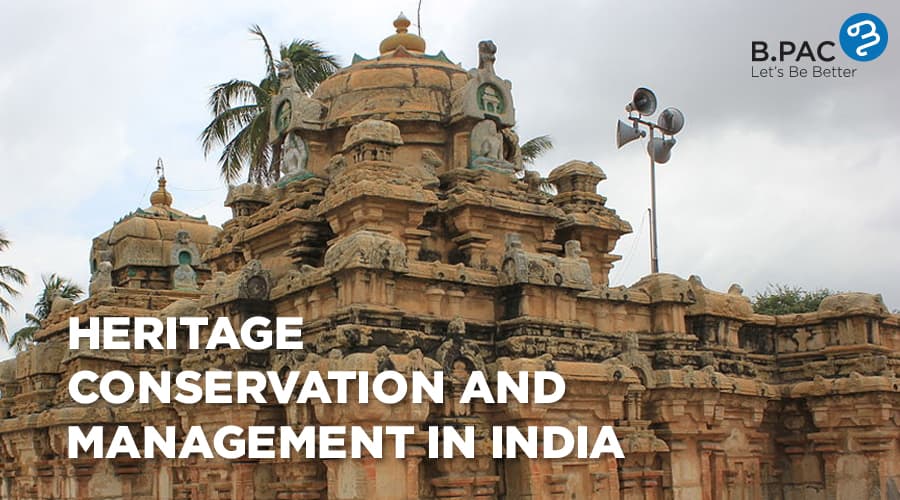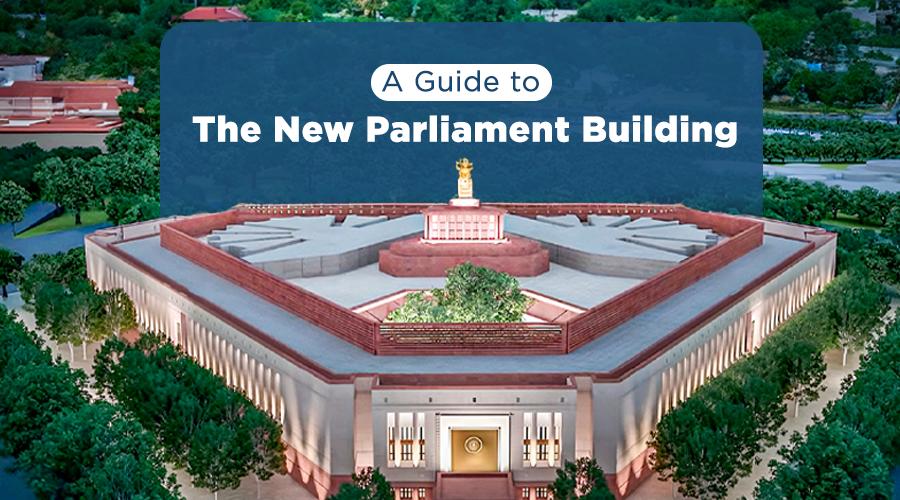The earliest evidence of the existence of a place called Bengaluru comes from a stone inscription found at Naganatheshwara Temple, Begur. The hero stone dating back to 890 AD, written in Halegannada mentions that Buttanapathi, a warrior, died in ‘Bengaluru Kadana.’ This 1,100 year old relic, important in tracing the city’s history, is today in a state of neglect. While Bengaluru is growing leaps and bounds, our heritage structures and antiquities have failed to gain importance, instead have fallen prey to it. This is also true in the case of four Kempegowda Towers, a contribution of the founder of the city. The towers, despite being declared as a Monument of National Importance by the Archaeological Survey of India (ASI), have failed to receive sufficient protection.
While the Begur inscription has failed to gain attention of the Archaeology Department and has been left to be exposed to the climate vagaries. In the case of the latter, the recognition by ASI has failed to make any impact. These two examples are one among the several cultural heritages in India that are in a dilapidated state or on the verge of disappearing. This paints a sad picture for a country which has a large diversity of heritage, unmatched to any other country. The present state of heritage in India is largely due to the absence of a concrete heritage conservation and management plan and concerted effort to preserve our history.
In this blog, while exploring the rich tangible cultural heritage of our country, we also look into the lacunae in the present conservation plan and on how to address it. It needs to be understood on the background of the need to maintain and preserve India’s rich heritage along with the multi dimensional opportunities heritage management can provide.
INDIA’S CULTURAL HERITAGE AND OPPORTUNITIES
Heritage encompasses the whole that has been inherited from our ancestors, both cultural and natural. Cultural heritage refers to all the components that were essential for human society to function. These, both tangible and intangible, are passed through generations undergoing changes with time. In the present interest, the focus is on tangible cultural heritage. Tangible cultural heritage refers to architectural monuments, sculptures, paintings, inscriptions, dwelling sites and antiquities such as coins, epigraphs and so on. And there is no dearth for cultural heritage in India.
The built heritage of India is vast and diverse due to its geographical expanse and the various influences over the years lending a unique cultural identity. Surveys show that there exists over 5 lakh plus archeological heritage and over 58 lakh plus antiquities. Of which 32 have made it to the UNESCO list of World Heritage Sites. But this huge archaeological repository is threatened by natural and man made factors and is under dire need for preservation and conservation. With a mere 3,693 monuments declared as CPM’s by ASI and around 5000 plus monuments protected under the State Archaeology Departments, several unprotected sites are fading away. A comprehensive heritage management plan and its implementation is the answer.
However, this gains primacy only when the significance of their protection and the opportunities they provide is understood. Protection of built cultural heritage is for the common good of the society. They are essential for the sustenance of cultural, economic and environmental aspects of a country. They also hold the potential to influence the above factors and the area of geopolitics.
Culture is the binding force of all societies and their protection is essential for the survival and continuation of a society. Preserving them creates a sense of belongingness and pride. Further several heritage structures were built in accordance with the geography of a region and to aid sustainable living. But several of these structures like step wells, kalyanis were lost with time. However, restoring them is one of the solutions to beat water distress, Ex. Mission Kakatiya by Telangana Government. This environmental significance is interlinked with
economic significance as well. In addition, heritage places have the potential to contribute greatly to the tourism sector. India’s diverse heritage tourism can create large scale employment at the local level building self-sustaining economies at local level and increase the contribution to the GDP. Inherently this puts India’s culture on the world map. Finally yet importantly, cultural heritage is a means of soft power in foreign policy. Similar to the Silk Route that is being utilized by China, ancient India’s influence on SouthEast Asia has the ability to create impact.
Given the background of need and opportunities arising from heritage management, it is pertinent to know the system in place and gaps and challenges faced at present.
PRESENT STATUS OF HERITAGE CONSERVATION AND MANAGEMENT
The Ministry of Culture is responsible for the preservation, conservation and promotion of Indian heritage and culture. ASI under the Ministry is the central agency tasked with archaeological research, preservation and conservation. The Ancient Monuments and Archaeological Sites and Remains Act (AMASR), 1958 and Antiquities and Treasuries Act, 1972 are the main legislations associated with heritage conservation. In accordance with the AMASR Act, ASI declares monuments of national importance, thus gaining protected status. Besides, monuments are protected under State Archaeology Departments and a significant number of temples, mosques, gurudwaras, churches under the custody of religious endowments and trusts. Several urban built heritages are maintained by the Public Works Department. The Ministry has also set up National Museums to protect, display and educate about Indian antiquities. To fill in the gaps of the state agencies, NGOs like INTACH, Aga Khan Trust have been working in the areas of documentation and restoration of Indian heritage.
To further these efforts, the AMASR Act was amended in 2010 by declaring a prohibited and regulated area of 100mts and 200mts respectively around ancient monuments, in an effort to avoid encroachments and illegal constructions around the monument. The amendment also established the National Monuments Authority, and was tasked with heritage bylaws for protected monuments. In the recent past,the government has been making efforts to include the private sector in
this task and to promote tourism. The National Cultural Fund was set up to build donor partnerships in preserving Indian heritage. Adopt a Heritage also on the same lines focuses on bringing CSR funds towards heritage conservation. All of these add up to promote heritage tourism. Swadesh Darshan, PRASHAD, HRIDAY schemes are in the making to ensure both heritage conservation and promotion.
Unfortunately, these efforts have not yielded satisfactory results. A large number of protected monuments continue to languish. Amidst jostling between protected and unprotected monuments, India is steadily losing a part of its rich heritage. The National Policy for Conservation of Ancient Monuments, Archaeological Sites and Remains (NPC- AMASR) brought by ASI in 2014 has also failed to deliver results. A look into the gaps in the present structure and addressing the existential challenges is the need of the hour.
STRENGTHENING HERITAGE CONSERVATION AND MANAGEMENT
The fault lines leading to the improper heritage management have been pointed out by the CAG Report in 2013 and 2022. Further, NITI Aayog conducted a gap analysis and provided recommendations in its report, “Improving Heritage Management in India.”
Concern areas and Challenges:
- Absence of a short term, medium and long term plan towards heritage conservation despite its mandate in NPC- AMASR.
- Significant delays observed in any initiatives taken up towards heritage management
– National Mission on Monuments and Antiquities was launched in 2007 with the mandate to develop a comprehensive database of built sites and antiquities. Despite the extension in deadline, the documentation remains incomplete.
– National Monuments Authority has been slow in bringing out heritage by laws for all 3,693 CPM’s. Presently, less than 10% are in the pipeline.
- Human Resource constraints- This is the primary reason for delays on the conservation end. High vacancies have left officials overburdened with administrative work.
- Financial constraints- Funding towards ASI has increased since the recommendation by the Public Accounts Committee in 2013. But a moderate 40% of the expenditure is towards conservation and ~ 1% is towards excavations.
- Slow progress in excavation- Excavations have been progressing very slow on one hand and on the other excavation reports of 60 plus years old remain unpublished.
– The excavated are also in a state of neglect, with encroachments and excavated remains left in open.
- National and state museums are also in a neglected state with lack of efforts made to develop them into knowledge centers.
- Lack of use of technology in documentation, conservation, management and promotion of Indian heritage.
- Lack of coordination between various agencies like ASI, State Archaeology Departments, CPWD, local governments and so on protecting built heritage.
Recommendations:
- Vigorous implementation of NPC- AMASR while drawing a road map for effective achievement of ASI’s mandate.
- Build a single National Archaeological Database and validate them through the use of GIS.
- Increase expenditure towards conservation and excavation (to 5% from present 1%)
– Use of latest technologies like digital mapping for excavations, surveys and conservation
– Train a new generation of human resources in archaeology. The Indian Institute of Heritage Studies is a step in the right direction.
– Fill up vacancies in ASI
- Update the guidelines for conservation of heritage structures and antiquities. – Draw a conservation plan for each site/ monument and submit annual audit reports.
– The local craftsmen in the region have to be trained and upskilled towards conservation efforts. Thus, protecting age old craft traditions and creating local employment.
- Draw up an Excavation and Exploration policy. This should include all the modalities related to excavation and post excavation. It should also look into how these excavation sites can be turned into tourism areas.
- Developing present national and state museums by recruiting qualified curators and carrying out initiatives to increase footfall.
– The archaeological museums announced during Budget 2020-21 have to be set up at the earliest.
- Include local governments in the protection of cultural heritage – Dissemination of power and responsibilities to third tier government aids to formulate hyper local policies for heritage conservation and management – Heritage walks can replace Swadesh Darshan at the local level. Local governments have to be included in the implementation of HRIDAY. Thus, better preservation and larger coverage of heritage monuments and antiquities while maintaining constitutional principles.
– Well formulated local policies which include citizen participation builds a sense of pride and responsibility amongst citizens towards heritage sites in their cities or villages. Increased awareness can also build a cultural economy.
In addition, a heritage management plan has to be formulated which ensures heritage conservation and is revenue generating and promotes tourism: – Several more monuments have to be brought under the ticketing system. – Adopt a Heritage scheme has to be extended to more monuments. The monuments have to be made self-sustaining with the revenue generated being used for conservation costs. Such schemes should focus on providing tourist amenities.
– Train people in the surrounding areas as local guides and also as conservationists as seen in the case of Historic Town of Vigan, Vietnam. – Involve local government and school children in conservation efforts, thus building a sense of pride as seen in Slovenia. Include heritage education as part of the curriculum.
– Build a micro economy in the region of the heritage site by promoting intangible cultural heritage native to it, Ex. Rajasthan
– Build collaborations with other nations for conservation efforts, tracing heritage routes and influences. Project Mausam is one such initiative and has to be expedited.
– Focus on developing all UNESCO World Heritage Sites in the country and strategize nominations.
HERITAGE FOR THE FUTURE
The cultural heritage of a country plays an important role in defining the present and future of a society on multiple levels. They are living history of our culture & civilization,documenting various phases of our journey through different time periods. Thus, before we lose out on heritage gems like Begur Inscription, Kempegowda Towers and several other unprotected and undocumented sites, the government has to update the heritage management plan based on the recommendations of various committees. We must strive to instill a sense of pride in our future generations to know about this great civilization. Heritage Week let us pledge as citizens of India to take a step to exercise our fundamental duty under Article 51 A (f), “ to value and preserve the rich heritage of our composite culture.”





